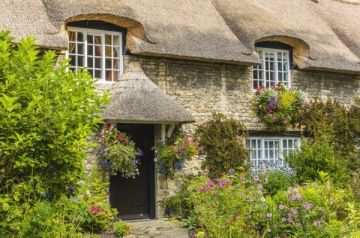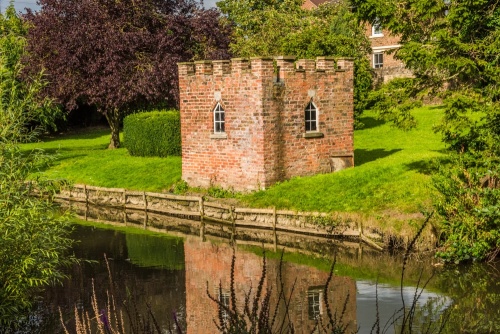
One of the most unusual Georgian buildings in Britain is a small castellated red-brick building on the banks of Bedale Beck, on the edge of the historic market town of Bedale, Yorkshire. This is the Bedale Leech House, where leeches for bloodletting were kept until they were needed by local doctors. This is thought to be the last remaining leech house in Britain.
History
Leeches have been used for medical purposes for over 4,000 years. Doctors used them to suck blood from their patients, on the theory that draining blood would help balance the patient's 'humours'. There were thought to be four 'humours', or fluids, in the human body and for optimum health they needed to be in balance. The humours were blood, phlegm, yellow bile, and black bile.
This medical theory evolved in ancient Greece and led to the common practice of bloodletting; draining blood from a patient. Sometimes a doctor would cut the patient and drain blood into a receptacle, but it was much easier to control the amount of blood loss by using leeches.
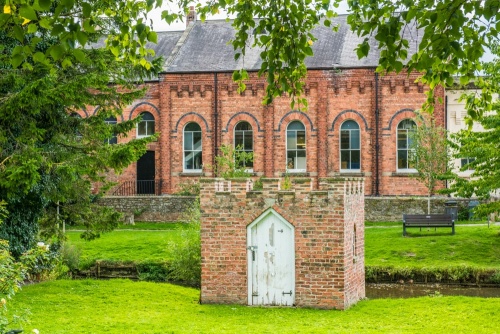
Leeches are a relative of earthworms, and if they are placed on a patient's skin (or a small cut on the skin) they will suck the patient's blood. By controlling the number of leeches placed on a patient's skin and the length of time they stayed there, doctor's could control the amount of blood loss. They were viewed as a less painful method of bloodletting.
By modern medical standards, the use of leeches and the concept of bloodletting seem bizarre, but for thousands of years, this was standard medical practice.
Leeches
The leech is a relative of the common earthworm. Its body is made of 34 segments, with a sucker at each end. The anterior sucker, made from the first six segments, secretes a liquid that acts as an anaesthetic and stops the host from feeling the leech while it feeds. The leech also secretes an anticoagulant into the host's bloodstream.
The posterior sucker is used purely to hang onto the host while feeding. Leeches are usually found in ponds and ditches. In nature, they attach themselves to a host, feed until they are full, then fall off to digest the blood. Once full, they can survive for up to a year without needing to feed again.
Most leeches do not feed on humans but on small invertebrates.
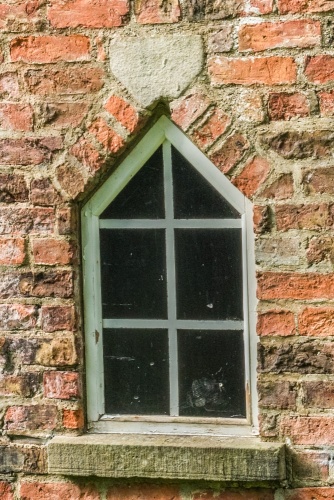
Leech Storage
Leeches were gathered from marshes, using horses - or human legs - as bait. This was usually done by poor women, who sold their leeches to apothecaries - the equivalent of modern druggists. The apothecaries kept the leeches until they were called for by a doctor. Leeches were quite easy to keep; once they were full of blood they did not need to eat again for as much as a year.
To keep the leeches the apothecaries needed a storage area close to a source of water. They also needed a place that could be kept relatively warm. That was the role of the leech house.
The Bedale Leech House stands next to Bedale Beck. Water from the beck was diverted through the building and then allowed to run back into the beck. Leeches were stored in containers of moss and turf moistened by the flowing water. A fireplace against one wall ensured that the temperature inside the leech house was kept above freezing.
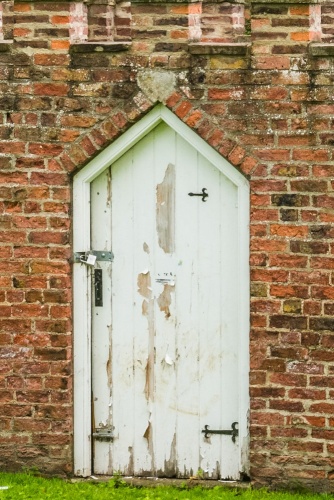
and castellated roofline
The Leech House is thought to have been built in the late 18th century. It was used for storage leeches into the early 20th century. When a local doctor requested leeches the apothecary gathered the required number into a glass jar and delivered them to the doctor.
We do not know who built the Leech House but we do know that a local apothecary named Bellamy employed George Thornton to gather leeches. The use of leeches in medicine was at its highest from 1825-1850. So many leeches were used during this that the supply became scarce, making a safe place to store them before use even more important.
The Leech House is almost square, measuring 10.7 feet x 10.1 feet (3.25m x 3.07m). It was built by an apothecary living on the Bedale Hall estate, owned by the Beresford-Peirse family. The castellated building stands in a garden area known as Bedale Renaissance Park. The Leech House was restored in 1985.
There is no admission to the Leech House interior, but you can explore the exterior and enjoy the park and its riverside location.
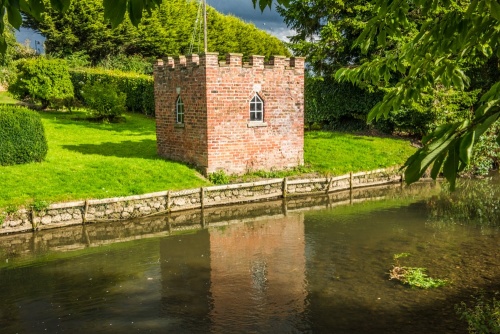
Getting There
The Leech House is a very short walk from the market place in Bedale, though technically it is on the far side of the beck in the neighbouring village of Aiskew. Renaissance Park is off Bedale Road on the east (Aiskew) side of the beck. From the market place simply turn east down Bridge Street, cross the bridge, and you will see the Leech House on your right.
About Bedale Leech House
Address: Renaissance Park,
Bedale,
Yorkshire Dales,
Yorkshire,
England
Attraction Type: Historic Building
Location: Off Bedale Road on the Aiskew side of Bedale Beck. The nearest postcode is DL8 1AN.
Location map
OS: SE267883
Photo Credit: David Ross and Britain Express
HERITAGE
 We've 'tagged' this attraction information to help you find related historic attractions and learn more about major time periods mentioned.
We've 'tagged' this attraction information to help you find related historic attractions and learn more about major time periods mentioned.
Find other attractions tagged with:
NEARBY HISTORIC ATTRACTIONS
Heritage Rated from 1- 5 (low to exceptional) on historic interest
Bedale Hall & Museum - 0.2 miles (Historic Building) ![]()
Bedale, St Gregory's Church - 0.2 miles (Historic Church) ![]()
Thorp Perrow Arboretum - 2.1 miles (Garden) ![]()
Snape Castle Chapel - 2.5 miles (Historic Church) ![]()
Masham, St Mary's Church - 5.4 miles (Historic Church) ![]()
Kiplin Hall - 5.8 miles (Historic House) ![]()
Marmion Tower - 6 miles (Historic Building) ![]()
West Tanfield, St Nicholas' Church - 6 miles (Historic Church) ![]()
Nearest Holiday Cottages to Bedale Leech House:
Kirklington, Yorkshire
Sleeps: 4
Stay from: £400 - 1447
More self catering near Bedale Leech House



